816 start with S start with S

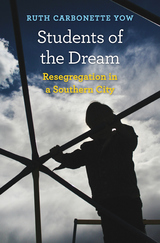
For decades, Marietta High was the flagship public school of a largely white suburban community in Cobb County, Georgia, just northwest of Atlanta. Today, as the school’s majority black and Latino students struggle with high rates of poverty and low rates of graduation, Marietta High has become a symbol of the wave of resegregation that is sweeping white students and students of color into separate schools across the American South.
Students of the Dream begins with the first generations of Marietta High desegregators authorized by the landmark Brown v. Board of Education ruling and follows the experiences of later generations who saw the dream of integration fall apart. Grounded in over one hundred interviews with current and former Marietta High students, parents, teachers, community leaders, and politicians, this innovative ethnographic history invites readers onto the key battlegrounds—varsity sports, school choice, academic tracking, and social activism—of Marietta’s struggle against resegregation. Well-intentioned calls for diversity and colorblindness, Ruth Carbonette Yow shows, have transformed local understandings of the purpose and value of school integration, and not always for the better.
The failure of local, state, or national policies to stem the tide of resegregation is leading activists—students, parents, and teachers—to reject traditional integration models and look for other ways to improve educational outcomes among African American and Latino students. Yow argues for a revitalized commitment to integration, but one that challenges many of the orthodoxies—including colorblindness—inherited from the mid-twentieth-century civil rights struggle.

Studies in Ancient Midrash is the proceedings of a conference, held at Harvard University, surveying the beginnings of ancient biblical interpretation.
Essays include "Ancient Biblical Interpretation and the Biblical Sage," by James Kugel; "Literacy and the Polemics Surrounding Biblical Interpretation," by A. I. Baumgarten; "Garments of Skin, Garments of Glory," by Gary Anderson; "Leave the Dead to Bury Their Own Dead," by Menahem Kister; "Contours of Genesis Interpretation at Qumran," by Moshe Bernstein; "Qohelet's Reception and Interpretation," by Marc Hirshman; "Law, Morality and Rhetoric in Some Sayings of Jesus," by Menahem Kister; and "Biblical Interpretation in Some Qumran Prayers and Hymns," by James Kugel.





This collection of seventeen essays by James Hightower and Florence Chia-ying Yeh contains three chapters on shih poetry, ten chapters on Sung tz'u, and four chapters on the works of Wang Kuo-wei. It includes ten previously published works, including Hightower's now-classic work on T'ao Ch'ien and Yeh's studies of Sung tz'u, as well as seven important additions to the literature on Chinese poetry. The essays treat individual poets, particular poetic techniques (for example, allusion), and general issues of period style and poetry criticism. The previously published items have been updated to include the Chinese texts of all poems presented in translation.
Although authored separately by Professors Hightower and Yeh, the Essays presented here are the result of their thirty years of collaboration in working on Chinese poetry. Through close readings of individual texts, the two authors explicate the stylistic and psychological components of the work of the poets they study and present compelling interpretations of their poems.

In 1965, a group of economists at Harvard University established the Project for Quantitative Research in Economic Development in the Center for International Affairs. Brought together by a common background of fieldwork in developing countries and a desire to apply modern techniques of quantitative analysis to the policy problems of these countries, they produced this volume, which represents that part of their research devoted to formulating operational ways of thinking about development problems.
The seventeen essays are organized into four sections: General Planning Models, International Trade and External Resources, Sectoral Planning, and Empirical Bases for Development Programs. They raise some central questions: To what extent can capital and labor substitute for each other? Does development require fixed inputs of engineers and other specialists in each sector or are skills highly substitutable? Is the trade gap a structural phenomenon or merely evidence of an overvalued exchange rate? To what extent do consumers respond to changes in relative prices?





Unlike traditional Japanese literature, which has a rich tradition of comedy, modern Japanese literature is commonly associated with a high seriousness of purpose. In this path-breaking study, Joel R. Cohn analyzes works by three writers—Ibuse Masuji (1898-1993), Dazai Osamu (1909-1948), and Inoue Hisashi (1934- )—whose works constitute a relentless assault on the notion that comedy cannot be part of serious literature.
Cohn focuses on thematic, structural, and stylistic elements in the works of these writers to show that modern Japanese comedic literature is a product of a particular set of historical, social, and cultural experiences. Cohn finds that cultural and social forces in modern Japan have led to the creation of comic literature that tends to deflect attention away from a human other and turn in on itself in different forms.



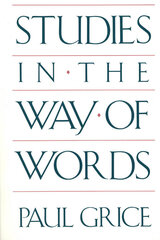
This volume, Paul Grice’s first book, includes the long-delayed publication of his enormously influential 1967 William James Lectures. But there is much, much more in this work. Grice himself has carefully arranged and framed the sequence of essays to emphasize not a certain set of ideas but a habit of mind, a style of philosophizing.
Grice has, to be sure, provided philosophy with crucial ideas. His account of speaker-meaning is the standard that others use to define their own minor divergences or future elaborations. His discussion of conversational implicatures has given philosophers an important tool for the investigation of all sorts of problems; it has also laid the foundation for a great deal of work by other philosophers and linguists about presupposition. His metaphysical defense of absolute values is starting to be considered the beginning of a new phase in philosophy. This is a vital book for all who are interested in Anglo-American philosophy.




It is everywhere recognized that China's mid-century population is a world problem, and not merely a national one. In spite of numerous studies on China's population by occidental and Chinese scholars, many aspects of the subject remain obscure because of the problems of interpretation. Ping-ti Ho makes a thorough examination of the machineries with which population data were collected in different periods. This has led him to redefine, among other things, the key term ting, which has served as almost the sole basis of reconstruction of China's historical population by many well-known authorities.
The second part of the book deals with factors which have affected the growth of China's population during the last six centuries: the approximate extents of cultivated conditions, institutional factors like fiscal burden and land tenure, and major deterrents to population growth such as floods, famines, and female infanticide. In his conclusion Ho correlates population data with economic and institutional factors of various periods and he suggests ways for a reconstruction of China's population history. While it is primarily an historical study, the book also correlates the past with the present.

The Study of al-Andalus is a collection of essays by students and colleagues of James T. Monroe, Professor Emeritus of Comparative Literature and Arabic at the University of California, Berkeley, and the premier scholar of Andalusi (Hispano-Arabic) literature in the United States. The introduction by the editors explains the impact Monroe’s scholarship has had on the fields of Arabic, Spanish, and comparative literatures.
The first essay in the collection explains the impact of Monroe’s watershed study Islam and Arabs in Spanish Scholarship (1971). The ten essays that follow explore the many ways in which Monroe’s scholarship has inspired further study in topics including Hispano-Arabic, Hebrew, and Romance literatures; Persian epic poetry; the impact of Andalusi literature in Egypt and the Arab East; and the lasting legacy of the expulsion of Spain’s last Muslims (the Moriscos) in the Early Modern and Modern Arab world.



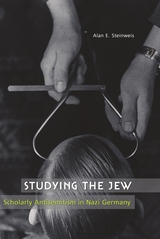
Early in his political career, Adolf Hitler declared the importance of what he called “an antisemitism of reason.” Determined not to rely solely on traditional, cruder forms of prejudice against Jews, he hoped that his exclusionary and violent policies would be legitimized by scientific scholarship. The result was a disturbing, and long-overlooked, aspect of National Socialism: Nazi Jewish Studies.
Studying the Jew investigates the careers of a few dozen German scholars who forged an interdisciplinary field, drawing upon studies in anthropology, biology, religion, history, and the social sciences to create a comprehensive portrait of the Jew—one with devastating consequences. Working within the universities and research institutions of the Third Reich, these men fabricated an elaborate empirical basis for Nazi antisemitic policies. They supported the Nazi campaign against Jews by defining them as racially alien, morally corrupt, and inherently criminal.
In a chilling story of academics who perverted their talents and distorted their research in support of persecution and genocide, Studying the Jew explores the intersection of ideology and scholarship, the state and the university, the intellectual and his motivations, to provide a new appreciation of the use and abuse of learning and the horrors perpetrated in the name of reason.
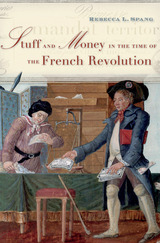
Winner of the Louis Gottschalk Prize, American Society for Eighteenth-Century Studies
A Financial Times Best History Book of the Year
A Choice Outstanding Academic Title of the Year
Rebecca L. Spang, who revolutionized our understanding of the restaurant, has written a new history of money. It uses one of the most infamous examples of monetary innovation, the assignats—a currency initially defined by French revolutionaries as “circulating land”—to demonstrate that money is as much a social and political mediator as it is an economic instrument. Following the assignats from creation to abandonment, Spang shows them to be subject to the same slippages between policies and practice, intentions and outcomes, as other human inventions.
“This is a quite brilliant, assertive book.”
—Patrice Higonnet, Times Literary Supplement
“Brilliant…What [Spang] proposes is nothing less than a new conceptualization of the revolution…She has provided historians—and not just those of France or the French Revolution—with a new set of lenses with which to view the past.”
—Arthur Goldhammer, Bookforum
“[Spang] views the French Revolution from rewardingly new angles by analyzing the cultural significance of money in the turbulent years of European war, domestic terror and inflation.”
—Tony Barber, Financial Times

One person can't help stuttering. The other can't help laughing. And in the way one bodily betrayal of better intentions mirrors the other, we find ourselves in the gray area where mind and body connect--and, at the damnedest moments, disconnect. In a book that explores the phenomenon of stuttering from its practical and physical aspects to its historical profile to its existential implications, Marc Shell plumbs the depths of this murky region between will and flesh, intention and expression, idea and word. Looking into the difficulties encountered by people who stutter--as do fifty million worldwide--Shell shows that, however solitary stutterers may be in their quest for normalcy, they share a kinship with many other speakers, both impeded and fluent.
Stutter takes us back to a time when stuttering was believed to be "diagnosis-induced," then on to the complex mix of physical and psychological causes that were later discovered. Ranging from cartoon characters like Porky Pig to cultural icons like Marilyn Monroe, from Moses to Hamlet, Shell reveals how stuttering in literature plays a role in the formation of tone, narrative progression, and character. He considers such questions as: Why does stuttering disappear when the speaker chants? How does singing ease the verbal tics of Tourette's Syndrome? How do stutterers cope with the inexpressible, the unspeakable?
Written by someone who has himself struggled with stuttering all his life, this provocative and wide-ranging book shows that stuttering has implications for myriad types of expression and helps to define what it means to be human.


Elegant data and ideas deserve elegant expression, argues Helen Sword in this lively guide to academic writing. For scholars frustrated with disciplinary conventions, and for specialists who want to write for a larger audience but are unsure where to begin, here are imaginative, practical, witty pointers that show how to make articles and books a pleasure to read—and to write.
Dispelling the myth that you cannot get published without writing wordy, impersonal prose, Sword shows how much journal editors and readers welcome work that avoids excessive jargon and abstraction. Sword’s analysis of more than a thousand peer-reviewed articles across a wide range of fields documents a startling gap between how academics typically describe good writing and the turgid prose they regularly produce.
Stylish Academic Writing showcases a range of scholars from the sciences, humanities, and social sciences who write with vividness and panache. Individual chapters take up specific elements of style, such as titles and headings, chapter openings, and structure, and close with examples of transferable techniques that any writer can master.

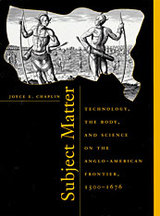
With this sweeping reinterpretation of early cultural encounters between the English and American natives, Joyce E. Chaplin thoroughly alters our historical view of the origins of English presumptions of racial superiority, and of the role science and technology played in shaping these notions. By placing the history of science and medicine at the very center of the story of early English colonization, Chaplin shows how contemporary European theories of nature and science dramatically influenced relations between the English and Indians within the formation of the British Empire.
In Chaplin's account of the earliest contacts, we find the English--impressed by the Indians' way with food, tools, and iron--inclined to consider Indians as partners in the conquest and control of nature. Only when it came to the Indians' bodies, so susceptible to disease, were the English confident in their superiority. Chaplin traces the way in which this tentative notion of racial inferiority hardened and expanded to include the Indians' once admirable mental and technical capacities. Here we see how the English, beginning from a sense of bodily superiority, moved little by little toward the idea of their mastery over nature, America, and the Indians--and how this progression is inextricably linked to the impetus and rationale for empire.

In this provocative new book, Elisabeth Young-Bruehl illuminates the psychological and intellectual demands writing biography makes on the biographer and explores the complex and frequently conflicted relationship between feminism and psychoanalysis.
A practicing psychoanalyst, a distinguished scholar, and the widely praised biographer of Anna Freud and Hannah Arendt, Young-Bruehl here reflects on the relations between self-knowledge, autobiography, biography, and cultural history. She considers what remains valuable in Sigmund Freud's work, and what areas--theory of character, for instance--must be rethought to be useful for current psychoanalytic work, for feminist studies, and for social theory.
Psychoanalytic theory used for biography, she argues, can yield insights for psychoanalysis itself, particularly in the understanding of creativity. Subject to Biography offers not simply the products of an astute mind, but an entrée into the thinking process; it welcomes the reader into the writer's workshop.

How do aesthetic forms contribute to different kinds of cultural knowledge? Gabriele Schwab responds to this question with an analysis of the nature of subjectivity in modernist fiction. Drawing on French and Anglo-American psychoanalysis as well as reader response theory, she explores the relationship between language and subjectivity and in so doing illuminates the cultural politics and psychological functions implicit in the aesthetic practices and literary forms of modernism and postmodernism. The result of this exploration is a new understanding of the function of literature as a form of cultural knowledge.
Schwab demonstrates how literature creates a transitional space where boundaries of language and subjectivity are continually aped and reshaped on both an individual and a cultural eve. Modern and postmodern experimental texts, in particular, fulfill this function through the multifarious exploration of the boundaries of poetic language and their opening to the unconscious. Undertaking what she terms a literary ethnography of the decentered subject, Schwab examines five novels: Herman Melville's Moby-Dick, Virginia Woolfs The Waves, James Joyce's Finnegans Wake, Samuel Beckett's The Unnamable, and Thomas Pynchon's Gravity's Rainbow. Schwab demonstrates how the aesthetic figurations of unconscious experience in these texts generate new forms of literary language and an aesthetic reception that is directly relevant to an increasingly global and hybridized culture.
In her concluding chapter, which introduces the notion of “textual ecologies,” Schwab analyzes the literary subjectivity of “transitional texts” in light of such contemporary theories as systems theory, cybernetics, and the new physics. From this perspective, such texts not only reflect cultural practices but take part in shaping their change and innovation.
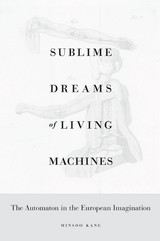
From the dawn of European civilization to the twentieth century, the automaton—better known today as the robot—has captured the Western imagination and provided a vital lens into the nature of humanity.
Historian Minsoo Kang argues that to properly understand the human-as-machine and the human-as-fundamentally-different-from-machine, we must trace the origins of these ideas and examine how they were transformed by intellectual, cultural, and artistic appearances of the automaton throughout the history of the West. Kang tracks the first appearance of the automaton in ancient myths through the medieval and Renaissance periods, marks the proliferation of the automaton as a central intellectual concept in the Scientific Revolution and the subsequent backlash during the Enlightenment, and details appearances in Romantic literature and the introduction of the living machine in the Industrial Age. He concludes with a reflection on the destructive confrontation between humanity and machinery in the modern era and the reverberations of the humanity-machinery theme today.
Sublime Dreams of Living Machines is an ambitious historical exploration and, at heart, an attempt to fully elucidate the rich and varied ways we have utilized our most uncanny creations to explore essential questions about ourselves.

Since the 1950s, Abe Kōbō (1924–1993) has achieved an international reputation for his surreal or grotesque brand of avant-garde literature. From his early forays into science fiction to his more mature psychological novels and films, and finally the complicated experimental works produced near the end of his career, Abe weaves together a range of “voices”: the styles of science and the language of literary forms.
In Abe’s oeuvre, this stylistic interplay links questions of language and subjectivity with issues of national identity and technological development in a way that ultimately aspires to become the catalyst for an artistic revolution. While recognizing the disruptions such a revolution might entail, Abe’s texts embrace these disjunctions as a way of realizing radical new possibilities beyond everyday experience and everyday values.
By arguing that the crisis of identity and postwar anomie in Abe’s works is inseparable from the need to marshal these different scientific and literary voices, Christopher Bolton explores how this reconciliation of ideas and dialects is for Abe part of the process whereby texts and individuals form themselves—a search for identity that must take place at the level of the self and society at large.

In 1989 Jennifer Johnson was convicted of delivering a controlled substance to a minor. That the minor happened to be Johnson's unborn child made her case all the more complex, controversial, and ultimately, historical. Stephen R. Kandall, a neonatologist and pediatrician, testified as an expert witness on Johnson's behalf. The experience caused him to wonder how one disadvantaged black woman's case became a prosecutorial battlefield in the war on drugs. This book is the product of Kandall's search through the annals of medicine and history to learn how women have fared in this conflict and how drug-dependent women have been treated for the past century and a half.
Kandall's sleuthing uncovers an intriguing and troubling story. Opium, laudanum, and morphine were primary ingredients in the curative "powders" and strengthening "tonics" that physicians freely prescribed and pharmacists dispensed to women a hundred and fifty years ago. Or a woman could easily dose herself with narcotics and alcohol in the readily available form of "patent" medicines sold in every town and touted in popular magazines ("Over a million bottles sold and in every one a cure!"). For the most part unaware of their dangers, women turned to these remedies for "female complaints," such as "womb disease" and "congestion of the ovaries," as well as for "neurasthenia," a widespread but vague nervous malady attributed to women's weaker, more sensitive natures. Not surprisingly, by the latter half of the nineteenth century the majority of America's opiate addicts were women.
The more things change, the more they remain the same: Substance and Shadow shows how, though attitudes and drugs may vary over time--from the laudanum of yesteryear to the heroin of the thirties and forties, the tranquilizers of the fifties, the consciousness-raising or prescription drugs of the sixties, and the ascendance of crack use in the eighties--dependency remains an issue for women. Kandall traces the history of questionable treatment that has followed this trend. From the maintenance clinics of the early twenties to the "federal farms" of mid-century to the detoxification efforts and methadone maintenance that flourished in the wake of the Women's Movement, attempts to treat drug-dependent women have been far from adequate. As he describes current policies that put money into drug interdiction and prisons, but offer little in the way of treatment or hope for women like Jennifer Johnson, Kandall calls our attention to the social and personal costs of demonizing and punishing women addicts rather than trying to improve their circumstances and give them genuine help.

Jorge Bonilla is hospitalized with pneumonia from sleeping at the restaurant where he works, unable to afford rent on wages of thirty cents an hour. Domestic worker Yanira Juarez discovers she has labored for six months with no wages at all; her employer lied about establishing a savings account for her. We live in an era of the sweatshop reborn.
In 1992 Jennifer Gordon founded the Workplace Project to help immigrant workers in the underground suburban economy of Long Island, New York. In a story of gritty determination and surprising hope, she weaves together Latino immigrant life and legal activism to tell the unexpected tale of how the most vulnerable workers in society came together to demand fair wages, safe working conditions, and respect from employers. Immigrant workers--many undocumented--won a series of remarkable victories, including a raise of thirty percent for day laborers and a domestic workers' bill of rights. In the process, they transformed themselves into effective political participants.
Gordon neither ignores the obstacles faced by such grassroots organizations nor underestimates their very real potential for fundamental change. This revelatory work challenges widely held beliefs about the powerlessness of immigrant workers, what a union should be, and what constitutes effective lawyering. It opens up exciting new possibilities for labor organizing, community building, participatory democracy, legal strategies, and social justice.

With this important new book, Susan Suleiman lays the foundation for a postmodern feminist poetics and theory of the avant-garde. She shows how the figure of Woman, as fantasy, myth, or metaphor, has functioned in the work of male avant-garde writers and artists of this century. Focusing also on women's avant-garde artistic practices, Suleiman demonstrates how to read difficult modern works in a way that reveals their political as well as their aesthetic impact.
Suleiman directly addresses the subversive intent of avant-garde movements from Surrealism to postmodernism. Through her detailed readings of provocatively transgressive works by André Breton, Georges Bataille, Roland Barthes, Alain Robbe-Grillet, Marcel Duchamp, Max Ernst, and others, Suleiman demonstrates the central role of the female body in the male erotic imagination and illuminates the extent to which masculinist assumptions have influenced modern art and theory. By examining the work of contemporary women avantgarde artists and theorists--including Hélène Cixous, Marguerite Duras, Monique Wittig, Luce Irigaray, Angela Carter, Jeanette Winterson, Leonora Carrington, Barbara Kruger, Jenny Holzer, and Cindy Sherman--Suleiman shows the political power of feminist critiques of patriarchal ideology, and especially emphasizes the power of feminist humor and parody.
Central to Suleiman's revisionary theory of the avant-garde is the figure of the playful, laughing mother. True to the radically irreverent spirit of the historical avant-gardes and their postmodernist successors, Suleiman's laughing mother embodies the need for a link between symbolic innovation and political and social change.
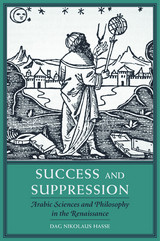
The Renaissance marked a turning point in Europe’s relationship to Arabic thought. On the one hand, Dag Nikolaus Hasse argues, it was the period in which important Arabic traditions reached the peak of their influence in Europe. On the other hand, it is the time when the West began to forget, and even actively suppress, its debt to Arabic culture. Success and Suppression traces the complex story of Arabic influence on Renaissance thought.
It is often assumed that the Renaissance had little interest in Arabic sciences and philosophy, because humanist polemics from the period attacked Arabic learning and championed Greek civilization. Yet Hasse shows that Renaissance denials of Arabic influence emerged not because scholars of the time rejected that intellectual tradition altogether but because a small group of anti-Arab hard-liners strove to suppress its powerful and persuasive influence. The period witnessed a boom in new translations and multivolume editions of Arabic authors, and European philosophers and scientists incorporated—and often celebrated—Arabic thought in their work, especially in medicine, philosophy, and astrology. But the famous Arabic authorities were a prominent obstacle to the Renaissance project of renewing European academic culture through Greece and Rome, and radical reformers accused Arabic science of linguistic corruption, plagiarism, or irreligion. Hasse shows how a mixture of ideological and scientific motives led to the decline of some Arabic traditions in important areas of European culture, while others continued to flourish.

Jean Piaget has spent a major part of his life work showing how thought is fundamentally derived from action. In Success and Understanding, this master psychologist inverts the question for the first time and considers how action is controlled by thought.
In a series of ingenious experiments, children are presented with physical puzzles just difficult enough to challenge their emerging skills. Under these conditions, Piaget reveals how the child comes to use his developing conceptual system to design strategies that result in successful actions. According to Piaget, it takes time for thought and action to enter into their familiar partnership. The young child has trouble using his ideas to guide his actions and must pass through several interesting stages before he can routinely coordinate idea and act.
Success and Understanding completes the Piagetian scheme for relating thought to action that was so brilliantly initiated in The Grasp of Consciousness (Harvard, 1976). Together, the two books form a major episode in the history of Piaget's remarkable career.
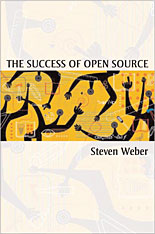
Much of the innovative programming that powers the Internet, creates operating systems, and produces software is the result of “open source” code, that is, code that is freely distributed—as opposed to being kept secret—by those who write it. Leaving source code open has generated some of the most sophisticated developments in computer technology, including, most notably, Linux and Apache, which pose a significant challenge to Microsoft in the marketplace. As Steven Weber discusses, open source’s success in a highly competitive industry has subverted many assumptions about how businesses are run, and how intellectual products are created and protected.
Traditionally, intellectual property law has allowed companies to control knowledge and has guarded the rights of the innovator, at the expense of industry-wide cooperation. In turn, engineers of new software code are richly rewarded; but, as Weber shows, in spite of the conventional wisdom that innovation is driven by the promise of individual and corporate wealth, ensuring the free distribution of code among computer programmers can empower a more effective process for building intellectual products. In the case of Open Source, independent programmers—sometimes hundreds or thousands of them—make unpaid contributions to software that develops organically, through trial and error.
Weber argues that the success of open source is not a freakish exception to economic principles. The open source community is guided by standards, rules, decisionmaking procedures, and sanctioning mechanisms. Weber explains the political and economic dynamics of this mysterious but important market development.
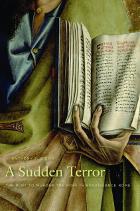
In 1468, on the final night of Carnival in Rome, Pope Paul II sat enthroned above the boisterous crowd, when a scuffle caught his eye. His guards had intercepted a mysterious stranger trying urgently to convey a warning—conspirators were lying in wait to slay the pontiff. Twenty humanist intellectuals were quickly arrested, tortured on the rack, and imprisoned in separate cells in the damp dungeon of Castel Sant’Angelo.
Anthony D’Elia offers a compelling, surprising story that reveals a Renaissance world that witnessed the rebirth of interest in the classics, a thriving homoerotic culture, the clash of Christian and pagan values, the contest between republicanism and a papal monarchy, and tensions separating Christian Europeans and Muslim Turks. Using newly discovered sources, he shows why the pope targeted the humanists, who were seen as dangerously pagan in their Epicurean morals and their Platonic beliefs about the soul and insurrectionist in their support of a more democratic Church. Their fascination with Sultan Mehmed II connected them to the Ottoman Turks, enemies of Christendom, and the love of the classical world tied them to recent rebellious attempts to replace papal rule with a republic harking back to the glorious days of Roman antiquity.
From the cosmetic-wearing, parrot-loving pontiff to the Turkish sultan, savage in war but obsessed with Italian culture, D’Elia brings to life a Renaissance world full of pageantry, mayhem, and conspiracy and offers a fresh interpretation of humanism as a dynamic communal movement.

Will southern Africa explode? Are there alternatives to violent revolution? Can other countries assist South Africa, Namibia, and Zimbabwe in achieving majority rule? Or can the problems be solved only by the peoples of each nation? And what should be done by the West to aid development, encourage racial harmony, and promote the general welfare?
For more than a generation Robert Rotberg has visited and written about southern Africa. He has not only studied the history and politics of the area but also has steeped himself in the economic, environmental, and geographic factors that have helped create conflict there. Rotberg has blended sophisticated political knowledge with personal experience to recount the past and make possible an understanding of the future. The result is a timely, wise, and lucid portrait of three nations in search of a destiny. Suffer the Future is a balanced account aimed at making general readers, as well as students of international problems, aware of the realistic alternatives for policy in and toward southern Africa.

A modern translation of verses by Bullhe Shah, the iconic eighteenth-century Sufi poet, treasured by readers worldwide to this day.
The poetry of Bullhe Shah (d. 1758) is considered one of the glories of premodern Panjabi literature. Born in Uch, Panjab, in present-day Pakistan, Bullhe Shah drew profoundly upon Sufi mysticism in his writings. His lyrics, famous for their vivid style and outspoken denunciation of artificial religious divisions, have long been held in affection by Hindus, Muslims, and Sikhs, and they continue to win audiences today across national boundaries and in the global Panjabi diaspora. Indeed, many young people in South Asia are already acquainted—albeit unknowingly at times—with the iconic eighteenth-century Panjabi poet’s words through popular musical genres of the twenty-first century.
The striking new translation in English is presented alongside the Panjabi text, in the Gurmukhi script, re-edited on the basis of the best modern Pakistani and Indian editions. Bullhe Shah’s Sufi Lyrics thus offers at once the most complete and most approachable version of this great poet’s works yet available.
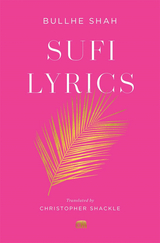
A modern translation of verses by Bullhe Shah, the iconic eighteenth-century Sufi poet, treasured by readers worldwide to this day.
Bullhe Shah’s work is among the glories of Panjabi literature, and the iconic eighteenth-century poet is widely regarded as a master of mystical Sufi poetry. His verses, famous for their vivid style and outspoken denunciation of artificial religious divisions, have long been beloved and continue to win audiences around the world. This striking new translation is the most authoritative and engaging introduction to an enduring South Asian classic.


In this wide-ranging study, Sucheta Mazumdar offers a new answer to the fundamental question of why China, universally acknowledged as one of the most developed economies in the world through the mid-eighteenth century, paused in this development process in the nineteenth.
Focusing on cane-sugar production, domestic and international trade, technology, and the history of consumption for over a thousand years as a means of framing the larger questions, the author shows that the economy of late imperial China was not stagnant, nor was the state suppressing trade; indeed, China was integrated into the world market well before the Opium War. But clearly the trajectory of development did not transform the social organization of production or set in motion sustained economic growth.

This poem belongs of the little-known Newari (Nepal Bhasha) language and literature, specifically to its even less known Buddhist version. It is one of the very rare cases that works in Newari language appear outside Nepal.
In nineteen long cantos, the Sugata Saurabha tells of the life of the Buddha, following the traditional accounts, but situates it in the strongly local context of Newar and Nepali Buddhism. It emulates the classical (Kavya) style of the long-standing Indian tradition, and has been inspired by the 2,000-year-old Sanskrit poem, the Buddhacarita. Consequently, the poet inserts stanzas composed in traditional classical Sanskrit meter, though written in polished Newari.
The poem was composed by the greatest modern writer in Newari language, Chittadhar Hrdaya (1906– 1982), while he was imprisoned by the autocratic strongly pro-Hindu Rana regime that governed Nepal from the mid-nineteenth to the mid-twentieth century.
The poem is the best-known work of the flowering of modern Newari literature that emerged after the restrictions of the Rana regime were lifted in 1950.

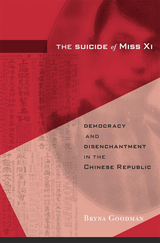
A suicide scandal in Shanghai reveals the social fault lines of democratic visions in China’s troubled Republic in the early 1920s.
On September 8, 1922, the body of Xi Shangzhen was found hanging in the Shanghai newspaper office where she worked. Although her death occurred outside of Chinese jurisdiction, her US-educated employer, Tang Jiezhi, was kidnapped by Chinese authorities and put on trial. In the unfolding scandal, novelists, filmmakers, suffragists, reformers, and even a founding member of the Chinese Communist Party seized upon the case as emblematic of deep social problems. Xi’s family claimed that Tang had pressured her to be his concubine; his conviction instead for financial fraud only stirred further controversy.
The creation of a republic ten years earlier had inspired a vision of popular sovereignty and citizenship premised upon gender equality and legal reform. After the quick suppression of the first Chinese parliament, commercial circles took up the banner of democracy in their pursuit of wealth. But, Bryna Goodman shows, the suicide of an educated “new woman” exposed the emptiness of republican democracy after a flash of speculative finance gripped the city. In the shadow of economic crisis, Tang’s trial also exposed the frailty of legal mechanisms in a political landscape fragmented by warlords and enclaves of foreign colonial rule.
The Suicide of Miss Xi opens a window onto how urban Chinese in the early twentieth century navigated China’s early passage through democratic populism, in an ill-fated moment of possibility between empire and party dictatorship. Xi Shangzhen became a symbol of the failures of the Chinese Republic as well as the broken promises of citizen’s rights, gender equality, and financial prosperity betokened by liberal democracy and capitalism.

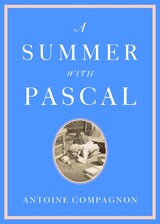
From an eminent scholar, a spirited introduction to one of the great polymaths in the history of Europe.
Blaise Pascal (1623–1662) is best known in the English-speaking world for his contributions to mathematics and physics, with both a triangle and a law in fluid mechanics named after him. Meanwhile, the classic film My Night at Maud’s popularized Pascal’s wager, an invitation to faith that has inspired generations of theologians. Despite the immensity of his reputation, few read him outside French schools. In A Summer with Pascal, celebrated literary critic Antoine Compagnon opens our minds to a figure somehow both towering and ignored.
Compagnon provides a bird’s-eye view of Pascal’s life and significance, making this volume an ideal introduction. Still, scholars and neophytes alike will profit greatly from his masterful readings of the Pensées—a cornerstone of Western philosophy—and the Provincial Letters, in which Pascal advanced wry theological critiques of his contemporaries. The concise, taut chapters build upon one another, easing into writings often thought to be forbidding and dour. With Compagnon as our guide, these works are not just accessible but enchanting.
A Summer with Pascal brings the early modern thinker to life in the present. In an age of profound existential doubt and assaults on truth and reason, in which religion and science are so often crudely opposed, Pascal’s sophisticated commitment to both challenges us to meet the world with true intellectual vigor.
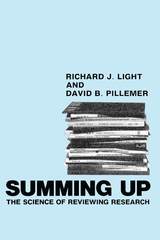
How can a scientist or policy analyst summarize and evaluate what is already known about a particular topic? This book offers practical guidance.
The amount and diversity of information generated by academic and policy researchers in the contemporary world is staggering. How is an investigator to cope with the tens or even hundreds of studies on a particular problem? How can conflicting findings be reconciled? Richard Light and David Pillemer have developed both general guidelines and step-by-step procedures that can be used to synthesize existing data. They show how to apply quantitative methods, including the newest statistical procedures and simple graphical displays, to evaluate a mass of studies and combine separate data sets. At the same time, they insist on the value of qualitative information, of asking the right questions, and of considering the context in which research is conducted. The authors use exemplary reviews in education, psychology, health, and the policy sciences to illustrate their suggestions.
Written in nontechnical language and addressed to the beginning researcher as well as to the practicing professional, Summing Up will set a new standard for valid research reviews and is likely to become a methodological classic.
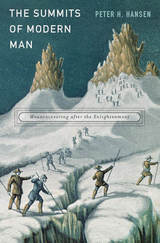
The history of mountaineering has long served as a metaphor for civilization triumphant. Once upon a time, the Alps were an inaccessible habitat of specters and dragons, until heroic men—pioneers of enlightenment—scaled their summits, classified their strata and flora, and banished the phantoms forever. A fascinating interdisciplinary study of the first ascents of the major Alpine peaks and Mount Everest, The Summits of Modern Man surveys the far-ranging significance of our encounters with the world’s most alluring and forbidding heights.
Our obsession with “who got to the top first” may have begun in 1786, the year Jacques Balmat and Michel-Gabriel Paccard climbed Mont Blanc and inaugurated an era in which Romantic notions of the sublime spurred climbers’ aspirations. In the following decades, climbing lost its revolutionary cachet as it became associated instead with bourgeois outdoor leisure. Still, the mythic stories of mountaineers, threaded through with themes of imperialism, masculinity, and ascendant Western science and culture, seized the imagination of artists and historians well into the twentieth century, providing grist for stage shows, poetry, films, and landscape paintings.
Today, we live on the threshold of a hot planet, where melting glaciers and rising sea levels create ambivalence about the conquest of nature. Long after Hillary and Tenzing’s ascent of Everest, though, the image of modern man supreme on the mountaintop retains its currency. Peter Hansen’s exploration of these persistent images indicates how difficult it is to imagine our relationship with nature in terms other than domination.

Between 1650 and 1750, four Catholic churches were the best solar observatories in the world. Built to fix an unquestionable date for Easter, they also housed instruments that threw light on the disputed geometry of the solar system, and so, within sight of the altar, subverted Church doctrine about the order of the universe.
A tale of politically canny astronomers and cardinals with a taste for mathematics, The Sun in the Church tells how these observatories came to be, how they worked, and what they accomplished. It describes Galileo's political overreaching, his subsequent trial for heresy, and his slow and steady rehabilitation in the eyes of the Catholic Church. And it offers an enlightening perspective on astronomy, Church history, and religious architecture, as well as an analysis of measurements testing the limits of attainable accuracy, undertaken with rudimentary means and extraordinary zeal. Above all, the book illuminates the niches protected and financed by the Catholic Church in which science and mathematics thrived.
Superbly written, The Sun in the Church provides a magnificent corrective to long-standing oversimplified accounts of the hostility between science and religion.


Antibiotics are powerful drugs that can prevent and treat infections, but they are becoming less effective as a result of drug resistance. Resistance develops because the bacteria that antibiotics target can evolve ways to defend themselves against these drugs. When antibiotics fail, there is very little else to prevent an infection from spreading.
Unnecessary use of antibiotics in both humans and animals accelerates the evolution of drug-resistant bacteria, with potentially catastrophic personal and global consequences. Our best defenses against infectious disease could cease to work, surgical procedures would become deadly, and we might return to a world where even small cuts are life-threatening. The problem of drug resistance already kills over one million people across the world every year and has huge economic costs. Without action, this problem will become significantly worse.
Following from their work on the Review on Antimicrobial Resistance, William Hall, Anthony McDonnell, and Jim O’Neill outline the major systematic failures that have led to this growing crisis. They also provide a set of solutions to tackle these global issues that governments, industry, and public health specialists can adopt. In addition to personal behavioral modifications, such as better handwashing regimens, Superbugs argues for mounting an offense against this threat through agricultural policy changes, an industrial research stimulus, and other broad-scale economic and social incentives.

To understand continental drift and plate tectonics, the shifting and collisions that make and unmake continents, requires a long view. The Earth, after all, is 4.6 billion years old. This book extends our vision to take in the greatest geological cycle of all—one so vast that our species will probably be extinct long before the current one ends in about 250 million years. And yet this cycle, the grandest pattern in Nature, may well be the fundamental reason our species—or any complex life at all—exists.
This book explores the Supercontinent Cycle from scientists' earliest inkling of the phenomenon to the geological discoveries of today—and from the most recent fusing of all of Earth's landmasses, Pangaea, on which dinosaurs evolved, to the next. Chronicling a 500-million-year cycle, Ted Nield introduces readers to some of the most exciting science of our time. He describes how, long before plate tectonics were understood, geologists first guessed at these vanishing landmasses and came to appreciate the significance of the fusing and fragmenting of supercontinents.
He also uses the story of the supercontinents to consider how scientific ideas develop, and how they sometimes escape the confines of science. Nield takes the example of the recent Indian Ocean tsunami to explain how the whole endeavor of science is itself a supercontinent, whose usefulness in saving human lives, and life on Earth, depends crucially on a freedom to explore the unknown.


We live in a world shaped by secularism—the separation of numinous power from political authority and religion from the political, social, and economic realms of public life. Not only has progress toward modernity often been equated with secularization, but when religion is admitted into modernity, it has been distinguished from superstition. That such ideas are continually contested does not undercut their extraordinary influence.
These divisions underpin this investigation of the role of religion in the construction of modernity and political power during the Nanjing Decade (1927–1937) of Nationalist rule in China. This book explores the modern recategorization of religious practices and people and examines how state power affected the religious lives and physical order of local communities. It also looks at how politicians conceived of their own ritual role in an era when authority was meant to derive from popular sovereignty. The claims of secular nationalism and mobilizational politics prompted the Nationalists to conceive of the world of religious association as a dangerous realm of “superstition” that would destroy the nation. This is the first “superstitious regime” of the book’s title. It also convinced them that national feeling and faith in the party-state would replace those ties—the second “superstitious regime.”


Aeschylus (ca. 525456 BCE), author of the first tragedies existing in European literature, was an Athenian born at Eleusis. He served at Marathon against Darius in 490, and again during Xerxes' invasion, 480479. Between 478 and 467 he visited Sicily, there composing by request Women of Aetna. At Athens he competed in production of plays more than twenty times, and was rewarded on at least thirteen occasions, becoming dominant between 500 and 458 through the splendour of his language and his dramatic conceptions and technique.
Of his total of 8090 plays seven survive complete. The Persians (472), the only surviving Greek historical drama, presents the failure of Xerxes to conquer Greece. Seven against Thebes (467) was the second play of its trilogy of related plays on the evil fate of the Theban House. Polyneices tries to regain Thebes from his brother Eteocles; both are killed. In Suppliant Maidens, the first in a trilogy, the daughters of Danaus arrive with him at Argos, whose King and people save them from the wooing of the sons of their uncle Aegyptus. In Prometheus Bound, first or second play of its trilogy about Prometheus, he is nailed to a crag, by order of Zeus, for stealing fire from heaven for men. Defiant after visitors' sympathy and despite advice, he descends in lightning and thunder to Hell. The Oresteia (458), on the House of Atreus, is the only Greek trilogy surviving complete. In Agamemnon, the King returns from Troy, and is murdered by his wife Clytaemnestra. In Libation-Bearers, Orestes with his sister avenges their father Agamemnon's death by counter-murder. In Eumenides, Orestes, harassed by avenging Furies, is arraigned by them at Athens for matricide. Tried by a court set up by Athena, he is absolved, but the Furies are pacified.
We publish in Volume I four plays; and in Volume II the Oresteia and some fragments of lost plays.

Three plays by ancient Greece’s third great tragedian.
One of antiquity's greatest poets, Euripides has been prized in every age for the pathos, terror, and intellectual probing of his dramatic creations. The new Loeb Classical Library edition of his plays is in six volumes.
Volume III contains three plays. Suppliant Women reflects on the rule of law; Electra gives Euripides' version of the legend of Clytaemestra's murder by her children; Heracles testifies to the fragility of human happiness.

Supply-side economics, emphasizing tax cuts over government spending, has been much maligned and little understood. It first leaped to national attention during the budget policy debates of 1977–78, when the new ideas captured the imagination of Congress and challenged conventional Keynesian models. After Ronald Reagan was elected, the fight was on in 1981 for what was called “the largest tax cut in history.” A year later, the same administration presided over the “largest tax increase in history.” Nine months after that, President Reagan reemerged as a supply-side leader.
This book tells what happened, and how. It is the story of a revolution in economic theory from its origin in Congressman Jack Kemp's office in the summer of 1975 through the first thirty months of the Reagan Administration. It details the struggles of key figures such as Donald Regan, James Baker, David Stockman, and Alice Rivlin.
It is also the first presentation by a professional economist of the hard case for supply-side economics. Paul Craig Roberts played a major role in managing the issue of supply-side economics both in the congressional staff and the executive branch. He has written an astonishingly candid study of the policy process—how individual ego tends to prevail over common cause, how power plays by politicians are more likely to determine policy than is the ideology of an administration, how skill at manipulating the media prevails over solid economic data. It is a stunning analysis, and a sobering one, from an expert supply-sider who continues to believe that history is on his side, and that supply-side thinking must prevail in a healthy, democratic society.

Theobald Smith (1859–1934) is widely considered to be America’s first significant medical scientist and the world’s leading comparative pathologist. Entering the new field of infectious diseases as a young medical graduate, his research in bacteriology, immunology, and parasitology produced many important and basic discoveries. His most significant accomplishment was proving for the first time that an infectious disease could be transmitted by an arthropod agent. He also made significant discoveries on anaphylaxis, vaccine production, bacterial variation, and a host of other methods and diseases. His work on hog cholera led to the selection of the paratyphoid species causing enteric fever as the prototype of the eponymous Salmonella genus, mistakenly named for his chief at the U.S. Department of Agriculture, Daniel Salmon, who first reported the discovery in 1886, although the work was undertaken by Smith alone.
In 1895, Smith began a twenty-year career as teacher and researcher at the Harvard Medical School and director of the biological laboratory at the Massachusetts State Board of Health. In 1902, when the Rockefeller Institute for Medical Research was founded, he was offered but declined its directorship; however, in 1914, when the Institute established a division of animal pathology, he became director of its research division. Suppressing the Diseases of Animals and Man, the first book-length biography of Smith to appear in print, is based primarily on personal papers and correspondence that have remained in the possession of his family until now.
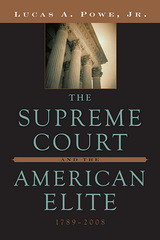
“The Supreme Court follows the election returns,” the fictional Mr. Dooley observed a hundred years ago. And for all our ideals and dreams of a disinterested judiciary, above the political fray, it seems Mr. Dooley was right. In this engaging—and disturbing—book, a leading historian of the Court reveals the close fit between its decisions and the nation’s politics.
The story begins with the creation of the Constitution and ends with the June 2008 decisions on the rights of detainees at Guantánamo Bay. Rendering crisp (and often controversial) judgments on key decisions from Marbury v. Madison to the War on Terror, Lucas Powe shows how virtually every major Supreme Court ruling, however deftly framed in constitutional terms, suited the wishes of the most powerful politicians of the time. This history reflects a changing Court, from the country’s early struggles over commerce and transportation to the torturous justifications of slavery before the Civil War, to a post–New Deal interest in ending segregation, controlling criminal procedure, and addressing knotty questions arising from the Cold War. Through all of this the Court emerges as part of a ruling regime, doing its best to implement the regime’s policies.
Drawing on more than four decades of thinking about the Supreme Court and its role in the American political system, this book offers a new, clear, and troubling perspective on American jurisprudence, politics, and history.

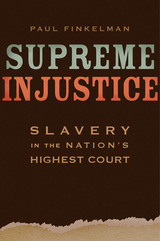
The three most important Supreme Court Justices before the Civil War—Chief Justices John Marshall and Roger B. Taney and Associate Justice Joseph Story—upheld the institution of slavery in ruling after ruling. These opinions cast a shadow over the Court and the legacies of these men, but historians have rarely delved deeply into the personal and political ideas and motivations they held. In Supreme Injustice, the distinguished legal historian Paul Finkelman establishes an authoritative account of each justice’s proslavery position, the reasoning behind his opposition to black freedom, and the incentives created by circumstances in his private life.
Finkelman uses census data and other sources to reveal that Justice Marshall aggressively bought and sold slaves throughout his lifetime—a fact that biographers have ignored. Justice Story never owned slaves and condemned slavery while riding circuit, and yet on the high court he remained silent on slave trade cases and ruled against blacks who sued for freedom. Although Justice Taney freed many of his own slaves, he zealously and consistently opposed black freedom, arguing in Dred Scott that free blacks had no Constitutional rights and that slave owners could move slaves into the Western territories. Finkelman situates this infamous holding within a solid record of support for slavery and hostility to free blacks.
Supreme Injustice boldly documents the entanglements that alienated three major justices from America’s founding ideals and embedded racism ever deeper in American civic life.


Surface Structure provides a complete and up-to-date exposition of a major variant of the Chomskian theory of language: the so-called Revised Extended Standard Theory. Robert Fiengo presents the theory in a clear and succinct way and shows how many of the leading ideas in the theory can be deepened and strengthened. It is Fiengo's central thesis that there is a syntactic level—surface structure—which constitutes the interface between syntactic, lexical, morphological and semantic components of the grammar. This thesis is defended across a broad range of problems in English grammar, resulting in a significant increase in the empirical coverage of the theory.
Although not a polemical work, Fiengo's book addresses many of the current controversies in linguistics and presents a rationale for guiding choices among competing theories. At a time when linguistic theories appear to be diverging in an explosive fashion, this lucid and current discussion is precisely what is needed.
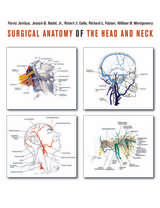
Surgical Anatomy of the Head and Neck was immediately hailed as indispensable when it was first published in 2001. In demand ever since, this classic surgical atlas—packed with more than 700 exceptional drawings, 537 of them in full color, by an internationally noted medical illustrator—is now available again, with an extensive new index, after years of being out of print.
Here is a surgeon’s-eye view of all anatomic details, from the upper thorax to the crown. Ideal for both surgery and test preparation, this volume features special boxed sections that focus on the surgical significance of each anatomical structure. Every illustration is clearly labeled with key anatomic landmarks, and a user-friendly design allows quick reference. This volume is an invaluable resource for surgeons, residents, and medical students.
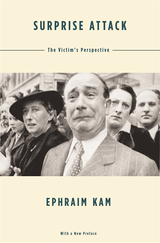
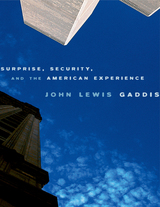
September 11, 2001, distinguished Cold War historian John Lewis Gaddis argues, was not the first time a surprise attack shattered American assumptions about national security and reshaped American grand strategy. We've been there before, and have responded each time by dramatically expanding our security responsibilities.
The pattern began in 1814, when the British attacked Washington, burning the White House and the Capitol. This early violation of homeland security gave rise to a strategy of unilateralism and preemption, best articulated by John Quincy Adams, aimed at maintaining strength beyond challenge throughout the North American continent. It remained in place for over a century. Only when the Japanese attacked Pearl Harbor in 1941 did the inadequacies of this strategy become evident: as a consequence, the administration of Franklin D. Roosevelt devised a new grand strategy of cooperation with allies on an intercontinental scale to defeat authoritarianism. That strategy defined the American approach throughout World War II and the Cold War.
The terrorist attacks of 9/11, Gaddis writes, made it clear that this strategy was now insufficient to ensure American security. The Bush administration has, therefore, devised a new grand strategy whose foundations lie in the nineteenth-century tradition of unilateralism, preemption, and hegemony, projected this time on a global scale. How successful it will be in the face of twenty-first-century challenges is the question that confronts us. This provocative book, informed by the experiences of the past but focused on the present and the future, is one of the first attempts by a major scholar of grand strategy and international relations to provide an answer.
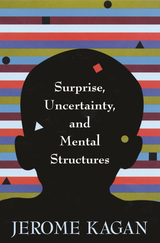
When we are startled by the new, confronted with discrepancies, our knowing gives way to uncertainty—and changes. In the distinctive manner that has made him one of the most influential forces in developmental psychology, Jerome Kagan challenges scientific commonplaces about mental processes, pointing in particular to the significant but undervalued role of surprise and uncertainty in shaping behavior, emotion, and thought.
Drawing on research in both animal and human subjects, Kagan presents a strong case for making qualitative distinctions among four different types of mental representation—perceptual schemata, visceral schemata, sensorimotor structures, and semantic networks—and describes how each is susceptible to the experience of discrepancy and the feeling of surprise or uncertainty. The implications of these findings are far-reaching, challenging current ideas about the cognitive understandings of infants and revealing the bankruptcy of contemporary questionnaire-based personality theory. More broadly, Kagan’s daring, thoroughly informed, and keenly reasoned book demonstrates the risks of making generalizations about human behavior, in which culture, context, and past experience play such paramount and unpredictable roles.
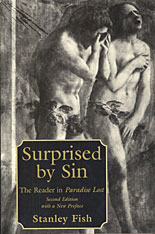
In 1967 the world of Milton studies was divided into two armed camps: one proclaiming (in the tradition of Blake and Shelley) that Milton was of the devil's party with or without knowing it, the other proclaiming (in the tradition of Addison and C. S. Lewis) that the poet's sympathies are obviously with God and the angels loyal to him.
The achievement of Stanley Fish's Surprised by Sin was to reconcile the two camps by subsuming their claims in a single overarching thesis: Paradise Lost is a poem about how its readers came to be the way they are--that is, fallen--and the poem's lesson is proven on a reader's impulse every time he or she finds a devilish action attractive or a godly action dismaying.
Fish's argument reshaped the face of Milton studies; thirty years later the issues raised in Surprised by Sin continue to set the agenda and drive debate.
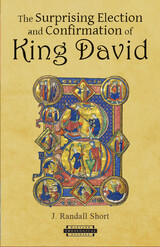
Some of the best-known Biblical episodes are found in the story of David’s rise to kingship in First and Second Samuel. Why was this series of stories included in the Bible? An answer that has become increasingly popular is that this narrative should be interpreted as the “apology of David,” that is, the personal justification of King David against charges that he illegitimately usurped Saul’s throne. Comparisons between “the History of David’s Rise” and the Hittite “Apology of Hattušili,” in particular, appear to support this view that the Biblical account belongs to the genre of ancient Near Eastern royal apology.
Having presented this approach, Randall Short argues that the Biblical account has less in common with the Hittite apology than scholars have asserted, and he demonstrates how interpretive assumptions about the historical reality behind the text inform the meaning that these scholars discern in the text. His central contention is that this story should not be interpreted as the personal exoneration of David composed to win over suspicious readers. Rather, composed for faithful readers represented by David, the story depicts the dramatic confirmation of David’s surprising election through his gradual emergence as the beloved son of Jesse, Saul, all Israel, and yhwh Himself.
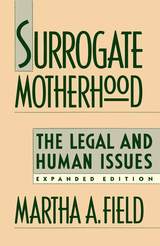
With an Expanded Appendix on the Current Legal Status of Surrogacy Arrangements
A practice known since Biblical times, surrogate motherhood has only recently leaped to prominence as a way of providing babies for childless couples—and leaped to notoriety through the dramatic case of Baby M. Contract surrogacy is officially little more than ten years old, but by 1986 five hundred babies had been born to mothers who gave them up to sperm donor fathers for a fee, and the practice is growing rapidly. Martha Field examines the myriad legal complexities that today enmesh surrogate motherhood, and also looks beyond existing legal rules to ask what society wants from surrogacy.
A man’s desire to be a “biological” parent even when his wife is infertile—the father’s wife usually adopts the child—has led to this new kind of family, and modern technology could further extend surrogacy’s appeal by making gestational surrogates available to couples who provide both egg and sperm. But is surrogacy a form of babyselling? Is the practice a private matter covered by contract law, or does adoption law govern? Is it good or bad social and public policy to leave surrogacy unregulated? Should the law allow, encourage, discourage, or prohibit surrogate motherhood? Ultimately the answers will depend on what the American public wants.
In the difficult process of sorting out such vexing questions, Martha Field has written a landmark book. Showing that the problem is rather too much applicable law than too little, she discusses contract law and constitutional law, custody and adoption law, and the rights of biological fathers as well as the laws governing sperm donation. Competing values are involved all along the legal and social spectrum. Field suggests that a federal prohibition would be most effective if banning surrogacy is the aim, but federal prohibition might not be chosen for a variety of reasons: a preference for regulating surrogacy instead of driving it underground; a preference for allowing regulation and variation by state; or a respect for the interests of people who want to enter surrogacy arrangements. Since the law can support a wide variety of positions, Field offers one that seems best to reconcile the competing values at stake. Whether or not paid surrogacy is made illegal, she suggests that a surrogate mother retain the option of abiding by or canceling the contract up to the time she freely gives the child to the adopting couple. And if she cancels the contract, she should be entitled to custody without having to prove in court that she would be a better parent than the father.
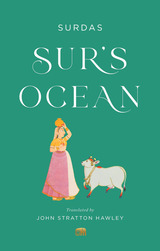
“John Stratton Hawley miraculously manages to braid the charged erotic and divine qualities of Krishna, the many-named god, while introducing us—with subtle occasional rhyme—to a vividly particularized world of prayers and crocodile earrings, spiritual longing and love-struck bees.”
—Forrest Gander, winner of the Pulitzer Prize for Poetry
An award-winning translation of Hindi verses composed by one of India’s treasured poets.
The blind poet Surdas has been regarded as the epitome of artistry in Hindi verse from the end of the sixteenth century, when he lived, to the present day. His fame rests upon his remarkable refashioning of the widely known narrative of the Hindu deity Krishna and his lover Radha into lyrics that are at once elegant and approachable. Surdas’s popularity led to the proliferation, through an energetic oral tradition, of poems ascribed to him, known collectively as the Sūrsāgar.
This award-winning translation reconstructs the early tradition of Surdas’s verse—the poems that were known to the singers of Surdas’s own time as his. Here Surdas stands out with a clarity never before achieved.

Surdas has been regarded as the epitome of artistry in Old Hindi religious poetry from the end of the sixteenth century, when he lived, to the present day. His fame rests upon his remarkable refashioning of the widely known narrative of the cowherd deity Krishna and his lover Radha into lyrics that are at once elegant and approachable. Surdas’s popularity led to the proliferation, through an energetic oral tradition, of poems ascribed to him, known as the Sūrsāgar.
Sur’s Ocean: Poems from the Early Tradition presents a dramatically new edition in Devanagari script and a lyrical English translation. This remarkable volume reconstructs the early tradition of Surdas’s verse—the 433 poems that were known to the singers of Surdas’s own time as his. Here Surdas stands out with a clarity never before achieved.
The Murty Classical Library of India makes available original texts and modern English translations of the masterpieces of literature and thought from across the whole spectrum of Indic languages over the past two millennia in the most authoritative and accessible formats on offer anywhere.

The great metropolis of Asia Minor, Sardis was the place where legendary Croesus ruled, where coinage was invented. Since 1958 a Harvard-Cornell archaeological team has worked at the site to retrieve evidence of the greatness of Lydian culture as well as of the prehistoric, Hellenistic, Roman, Byzantine, and Turkish civilizations that preceded and followed the Lydian kingdom. Here is the first of the richly illustrated volumes that will report their work.
Eight authors, experts from a variety of disciplines, put Sardis into its setting—physical, economic, and cultural. They offer a topographic survey of the city; a study of the vast defensive circuit of the Roman City Wall; and the first detailed examination of the sacred Precinct of Artemis, which housed one of the grandest temples of antiquity. The precinct's changing fortunes from archaic to Turkish times and the nature of the earliest temple on the site are discussed on the basis of new soundings, and reasons for the change to a temple dedicated jointly to Zeus and Artemis are outlined.
Also included is evidence for an archaic Lydian and a larger Hellenistic altar and for Lydian dwellings at the northeast boundary of the precinct. Located outside the City Walls, a Roman bath having fragments of Early Byzantine paintings illustrates experiments in combining Hellenistic masonry and Roman concrete structural systems.

Of the hundreds of thousands of Ukrainian women were sentenced to the Gulag in the 1940s and 1950s, only half survived. In Survival as Victory, Oksana Kis has produced the first anthropological study of daily life in the Soviet forced labor camps as experienced by Ukrainian women prisoners.
Based on the written memoirs, autobiographies, and oral histories of over 150 survivors, this book fills a lacuna in the scholarship regarding Ukrainian experience. Kis details the women’s resistance to the brutality of camp conditions not only through the preservation of customs and traditions from everyday home life, but also through the frequent elision of regional and confessional differences. Following the groundbreaking work of Anne Applebaum’s Gulag: A History (2003), this book is a must-read for anyone interested in gendered strategies of survival, accommodation, and resistance to the dehumanizing effects of the Gulag.

Co-winner of the Yad Vashem International Book Prize for Holocaust Research
The forgotten story of 200,000 Polish Jews who escaped the Holocaust as refugees stranded in remote corners of the USSR.
Between 1940 and 1946, about 200,000 Jewish refugees from Poland lived and toiled in the harsh Soviet interior. They endured hard labor, bitter cold, and extreme deprivation. But out of reach of the Nazis, they escaped the fate of millions of their coreligionists in the Holocaust.
Survival on the Margins is the first comprehensive account in English of their experiences. The refugees fled Poland after the German invasion in 1939 and settled in the Soviet territories newly annexed under the Molotov-Ribbentrop Pact. Facing hardship, and trusting little in Stalin, most spurned the offer of Soviet citizenship and were deported to labor camps in unoccupied areas of the east. They were on their own, in a forbidding wilderness thousands of miles from home. But they inadvertently escaped Hitler’s 1941 advance into the Soviet Union. While war raged and Europe’s Jews faced genocide, the refugees were permitted to leave their settlements after the Soviet government agreed to an amnesty. Most spent the remainder of the war coping with hunger and disease in Soviet Central Asia. When they were finally allowed to return to Poland in 1946, they encountered the devastation of the Holocaust, and many stopped talking about their own ordeals, their stories eventually subsumed within the central Holocaust narrative.
Drawing on untapped memoirs and testimonies of the survivors, Eliyana Adler rescues these important stories of determination and suffering on behalf of new generations.

Did you know that Tasmanian hens have two husbands? That cellular slime molds commit suicide? That vampire bats will share food with hungry fellow bats and that hanuman langurs commit infanticide? Why creatures great and small behave in such fascinating and seemingly perplexing ways is explained in this delightful account of the evolutionary foundations of animal social behavior.
Only in recent years have biologists and ethologists begun to apply careful evolutionary thinking to the study of animal societies--and with spectacular results. This book presents the choicest of these findings, with a remarkable wealth of insights into the myriad strategies that animals have developed to perpetuate their kind. In an irresistible style, Raghavendra Gadagkar explores the strategies of cooperation and conflict adopted by animals--from the lordly lion to the primitive wasp worker--as they choose mates, raise their young, communicate with others, and establish the division of labor necessary to feed and protect the group and safeguard their territory.
Whether focusing on the birds or the bees, this book offers both superb descriptions and lucid explanations of many different behaviors encountered in the animal world: why a ground squirrel will sound an alarm--even risk its own safety--to warn fellow squirrels of impending danger; why weaver ant larvae donate silk for nest building; why house mice raise their offspring in a communal nursery; and how animals can recognize the relatives they want to favor--or avoid.
Illustrated with both photographs and explanatory diagrams, this expert and inviting tour of the social world of animals will inform and charm anyone curious about the motivations behind the amazing range of activity in the animal kingdom.
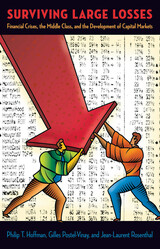
Listen to a short interview with Philip T. HoffmanHost: Chris Gondek | Producer: Heron & Crane
Financial disasters often have long-range institutional consequences. When financial institutions--banks, insurance companies, brokerage firms, stock exchanges--collapse, new ones take their place, and these changes shape markets for decades or even generations. Surviving Large Losses explains why such financial crises occur, why their effects last so long, and what political and economic conditions can help countries both rich and poor survive--and even prosper--in the aftermath.Looking at past and more recent financial disasters through the lens of political economy, the authors identify three factors critical to the development of financial institutions: the level of government debt, the size of the middle class, and the quality of information that is available to participants in financial transactions. They seek to find out when these factors promote financial development and mitigate the effects of financial crises and when they exacerbate them.Although there is no panacea for crises--no one set of institutions that will resolve them--it is possible, the authors argue, to strengthen existing financial institutions, to encourage economic growth, and to limit the harm that future catastrophes can do.

In a world of relentless and often violent change, what does it take for a culture to survive? Steven Weitzman addresses this question by exploring the "arts of cultural persistence"--the tactics that cultures employ to sustain themselves in the face of intractable realities. Surviving Sacrilege focuses on a famously resilient culture caught between two disruptive acts of sacrilege: ancient Judaism between the destruction of the First Temple (by the Babylonians) in 586 B.C. and the destruction of the Second Temple (by the Romans) in 70 C.E..
Throughout this period Jews faced the challenge of preserving their religious traditions in a world largely out of their control--a world ruled first by the Persians, then by the Hellenistic Seleucid Kingdom, and finally by the Roman Empire. Their struggle to answer this challenge yields insight into the ingenuity, resourcefulness, and creativity of a distinctive period in Jewish history, but one with broad implications for the study of religious and cultural survival.
Detecting something tenaciously self-preserving at the core of the imagination, Weitzman argues that its expression in storytelling, fantasy, imitation, metaphor, and magic allows a culture's survival instinct to maneuver within, beyond, and even against the limits of reality.
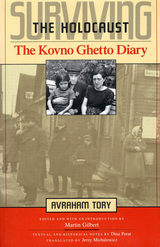
This remarkable chronicle of life and death in the Jewish Ghetto of Kovno, Lithuania, from June 1941 to January 1944, was written under conditions of extreme danger by a Ghetto inmate and secretary of the Jewish Council. After the war, in order to escape from Lithuania, the author was forced to entrust the diary to leaders of the Escape movement; eventually it made its way to his new home in Israel.
The diary incorporates Avraham Tory’s collections of official documents, Jewish Council reports, and original photographs and drawings made in the Ghetto. It depicts in grim detail the struggle for survival under Nazi domination, when—if not simply carted off and murdered in a random “action”—Jews were exploited as slave labor while being systematically starved and denied adequate housing and medical care. Through it all, Tory’s overriding purpose was to record the unimaginable events of these years and to memorialize the determination of the Jews to sustain their community life in the midst of the Nazi terror.
Of the surviving diaries originating in the principal European Ghettos of this period, Tory’s is the longest written by an adult, a dramatic and horrifying document that makes an invaluable contribution to contemporary history. Tory provides an insider’s view of the desperate efforts of Ghetto leaders to protect Jews. Martin Gilbert’s masterly introduction establishes the authenticity of the diary, presents its events against the backdrop of the war in Europe, and considers the crucial questions of collaboration and resistance.
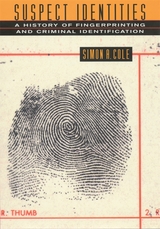
“No two fingerprints are alike,” or so it goes. For nearly a hundred years fingerprints have represented definitive proof of individual identity in our society. We trust them to tell us who committed a crime, whether a criminal record exists, and how to resolve questions of disputed identity.
But in Suspect Identities, Simon Cole reveals that the history of criminal identification is far murkier than we have been led to believe. Cole traces the modern system of fingerprint identification to the nineteenth-century bureaucratic state, and its desire to track and control increasingly mobile, diverse populations whose race or ethnicity made them suspect in the eyes of authorities. In an intriguing history that traverses the globe, taking us to India, Argentina, France, England, and the United States, Cole excavates the forgotten history of criminal identification—from photography to exotic anthropometric systems based on measuring body parts, from fingerprinting to DNA typing. He reveals how fingerprinting ultimately won the trust of the public and the law only after a long battle against rival identification systems.
As we rush headlong into the era of genetic identification, and as fingerprint errors are being exposed, this history uncovers the fascinating interplay of our elusive individuality, police and state power, and the quest for scientific certainty. Suspect Identities offers a necessary corrective to blind faith in the infallibility of technology, and a compelling look at its role in defining each of us.
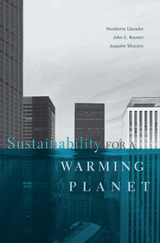
Human-generated greenhouse gas emissions imperil a global resource: a biosphere capable of supporting life as we know it. What is the fair way to share this scarce resource across present and future generations, and across regions of the world? This study offers a new perspective based on the guiding ethics of sustainability and egalitarianism.
Sustainability is understood as a pattern of economic activity over time that sustains a given rate of growth of human welfare indefinitely. To achieve this, the atmospheric concentration of carbon must be capped at some level not much higher than exists today, and investments in education and research should be higher than they currently are. International cooperation between developing and developed nations is also vital, because economic growth and the climate problem are intertwined.
The authors propose that the guiding principle of bargaining should be that the dates at which developing countries’ living standards catch up with those of developed countries should not be altered by the agreement. They conclude that developed economies would have to agree not to exceed 1 percent growth in per capita GDP annually, while developing nations should grow at a faster rate, but still lower than current projections, until they converge. The authors acknowledge that achieving such a dramatic slowdown would carry political and economic challenges.
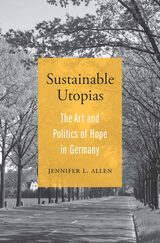
To reclaim a sense of hope for the future, German activists in the late twentieth century engaged ordinary citizens in innovative projects that resisted alienation and disenfranchisement.
By most accounts, the twentieth century was not kind to utopian thought. The violence of two world wars, Cold War anxieties, and a widespread sense of crisis after the 1973 global oil shock appeared to doom dreams of a better world. The eventual victory of capitalism and, seemingly, liberal democracy relieved some fears but exchanged them for complacency and cynicism.
Not, however, in West Germany. Jennifer Allen showcases grassroots activism of the 1980s and 1990s that envisioned a radically different society based on community-centered politics—a society in which the democratization of culture and power ameliorated alienation and resisted the impotence of end-of-history narratives. Berlin’s History Workshop liberated research from university confines by providing opportunities for ordinary people to write and debate the story of the nation. The Green Party made the politics of direct democracy central to its program. Artists changed the way people viewed and acted in public spaces by installing objects in unexpected environments, including the Stolpersteine: paving stones, embedded in residential sidewalks, bearing the names of Nazi victims. These activists went beyond just trafficking in ideas. They forged new infrastructures, spaces, and behaviors that gave everyday people real agency in their communities. Undergirding this activism was the environmentalist concept of sustainability, which demanded that any alternative to existing society be both enduring and adaptable.
A rigorous but inspiring tale of hope in action, Sustainable Utopias makes the case that it is still worth believing in human creativity and the labor of citizenship.

Environmental issues, once the benign hobby of the few, have become everybody's urgent concern--progressing from the peaceful vibes of the first Earth Day to the political tumult of the "green possibility." As we surpass the end of the twentieth century and as these issues become more pressing, John Young's tour de force is an especially welcome and timely assessment of the history of the environmental movement--and a call to arms for a new and effective attack on the problems.
Young maintains that only a powerful synthesis of political, economic, and moral ideologies--a unification he terms postenvironmentalism--will move world societies into a relation to the environment that maintains the best democratic values. He describes many of the movements and strategies that have appeared over the last three decades: realos, reds, greens, left and right ecologists, eco-feminists, humanists, and pragmatists. Now even the most radical environmentalists must recognize the reality of questions about equity and poverty, technology and energy, aid and trade between wealthy and impoverished countries, and the validity of the ways people consider them. As the process of trial and error this book describes continues, Young offers--in a thoughtful and undogmatic manner--an alternative perspective that is essential reading for all who care about our world.

This book explores the growing tension between the requirements of employers for a flexible work force and the ability of parents and communities to nurture their children and provide for their health, welfare, and education. Global competition and the spread of information technology are forcing businesses to engage in rapid, worldwide production changes, customized marketing, and just-in-time delivery. They are reorganizing work around decentralized management, work differentiation, and short-term and part-time employment. Increasingly, workers must be able to move across firms and even across types of work, as jobs get redefined.
But there is a stiff price being paid for this labor market flexibility. It separates workers from the social institutions—family, long-term jobs, and stable communities—that sustained economic expansions in the past and supported the growth and development of the next generation. This is exacerbated by the continuing movement of women into paid work, which puts a greater strain on the family's ability to care for and rear children. Unless government fosters the development of new, integrative institutions to support the new world of work, the author argues, the conditions required for long-term economic growth and social stability will be threatened. He concludes by laying out a framework for creating such institutions.

In 1919, C. Burton and Hattie S. Cosgrove bought land in Grant Country, New Mexico, and began excavating ruins containing Classic Mimbres (ca. A.D. 1000-1150) ceramics. The self-trained archaeologists took great care in uncovering and recording their findings. They so impressed A.V. Kidder of the Peabody Museum when he visited the site he invited them to manage a museum expedition to the Swarts Ruin.
Long out of print, this classic volume is the Cosgrove's report of their Mimbres Valley Expedition seasons of 1924 to 1927. The excavation recorded nearly 10,000 artifacts, including an extraordinary assemblage of Mimbres ceramics. Hattie Cosgrove's meticulous line drawings of over 700 individual Swarts Ruin pots have long been an invaluable design catalog for contemporary Native American artists and serve as a rich resource for designers seeking Southwest inspiration in their work.
This clothbound facsimile edition of the original 1932 publication will be an essential to the libraries of all scholars, artists, and admirers of Native American art and archaeology.
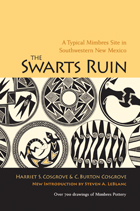
This classic volume on the evocative and enigmatic pottery of the Mimbres people has become an irreplaceable design catalogue for contemporary Native American artists. Burt and Harriet (Hattie) Cosgrove were self-trained archaeologists who began excavating Mimbres materials in 1919. When their meticulous research came to the attention of Alfred V. Kidder of the Peabody Museum, he invited them to direct the Mimbres Valley Expedition at the Swarts Ranch in southern New Mexico on behalf of the Peabody.
Working in the summers of 1924 to 1927, the Cosgroves recovered nearly 10,000 artifacts at the Swarts site, including an extraordinary assemblage of Mimbres ceramics. Like their original 1932 report, this paperbound facsimile edition includes over 700 of Hattie Cosgrove’s beautiful line drawings of individual Mimbres pots. It also presents a new introduction by archaeologist Steven A. LeBlanc, who reviews the eighty years of research on the Mimbres that have followed the Cosgroves’ groundbreaking study. The Peabody’s reissue of The Swarts Ruin once again makes available a rich resource for scholars, artists, and admirers of Native American art, and it places in historical context the Cosgroves’ many contributions to North American archaeology.

This is the second volume of Irvin Ehrenpreis's trilogy, and deals with the period 1699-1714. The years between 1699 and 1710 were a time of training—in some ways unfortunate, as Ehrenpreis shows—for the dramatic four years which followed for Swift, as a political journalist in England.
Swift's ecclesiastical career, his search for preferment and the gradual transformation of his social life are examined. The author also scrutinizes Swift's attachment to Esther Johnson and Esther Vanhomrigh, the evolution of his political principles, and his unconscious motivations, and he reaches some original conclusions. Above all, however, Ehrenpreis concentrates on Swift's literary works of this period; and for some of these, such as An Argument against Abolishing Christianity, The Conduct of the Allies, and A Discourse of the Contests and Dissensions, he provides analyses that can stand as independent critical essays.
Volume Two lives up in every way to the high hopes generated for it by Volume One. It draws widely on contemporary documents and on modern research into Swift's life and times, providing much new information as well as judgements that are both judicious and original.

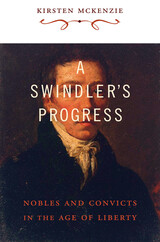
In May 1835 in a Sydney courtroom, a slight, balding man named John Dow stood charged with forgery. The prisoner shocked the room by claiming he was Edward, Viscount Lascelles, eldest son of the powerful Earl of Harewood. The Crown alleged he was a confidence trickster and serial impostor. Was this really the heir to one of Britain's most spectacular fortunes?
Part Regency mystery, part imperial history, A Swindler's Progress is an engrossing tale of adventure and deceit across two worlds—British aristocrats and Australian felons—bound together in an emerging age of opportunity and individualism, where personal worth was battling power based on birth alone. The first historian to unravel the mystery of John Dow and Edward Lascelles, Kirsten McKenzie illuminates the darker side of this age of liberty, when freedom could mean the freedom to lie both in the far-flung outposts of empire and within the established bastions of British power.
The struggles of the Lascelles family for social and political power, and the tragedy of their disgraced heir, demonstrate that British elites were as fragile as their colonial counterparts. In ways both personal and profound, McKenzie recreates a world in which Britain and the empire were intertwined in the transformation of status and politics in the nineteenth century.
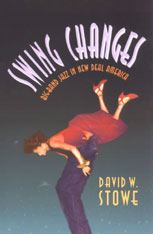
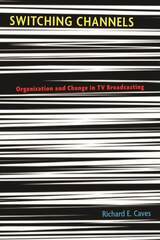
Media critics invariably disparage the quality of programming produced by the U.S. television industry. But why the industry produces what it does is a question largely unasked. It is this question, at the crux of American popular culture, that Switching Channels explores.
In the past twenty-five years, the expansion of cable and satellite systems has transformed television. Richard Caves examines the economics of this phenomenon--and the nature and logic of the broadcast networks' response to the incursion of cable TV, especially the shift to inexpensive unscripted game and "reality" shows and "news" magazines. An explanation of these changes, Caves argues, requires an understanding of two very different sectors: the "creative industry," which produces programs; and the commercial channels, which bring them to viewers. His book shows how distributors' judgment of profitability determines the quality and character of the programs the creative industry produces. This determination, writes Caves, depends on the number and types of viewers that various programs can attract and advertisers' willingness to pay for their attention, as well as the organization of the networks that package programs, the distributors that transmit them, and the deals these parties strike with one another.
READERS
Browse our collection.
PUBLISHERS
See BiblioVault's publisher services.
STUDENT SERVICES
Files for college accessibility offices.
UChicago Accessibility Resources
home | accessibility | search | about | contact us
BiblioVault ® 2001 - 2024
The University of Chicago Press









